Tokyo Chuo-ku
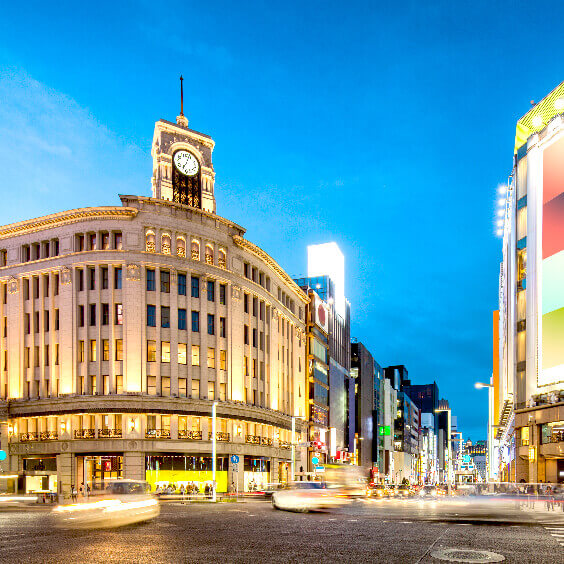
Chuo-Ku is a vibrant and charming area, such as Ginza, which is lined with luxury brand stores and high-end restaurants, and Nihonbashi and Yaesu, where famous department stores and high-rise office buildings are mixed together but still retain their old atmosphere. In addition, the redevelopment of the former Tsukiji Market site is attracting attention.
- Nihonbashi
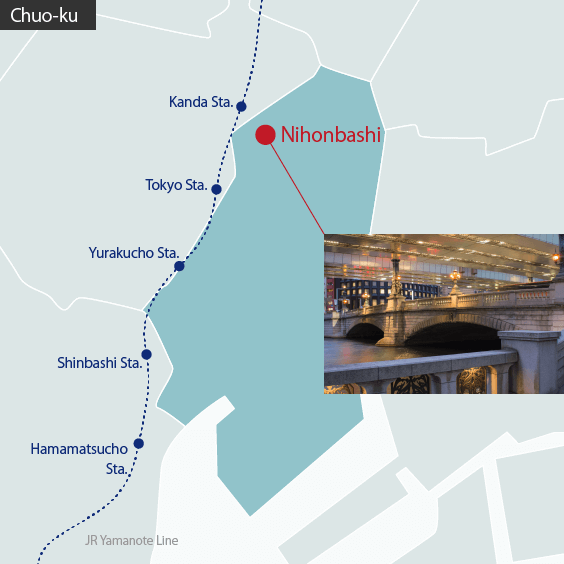
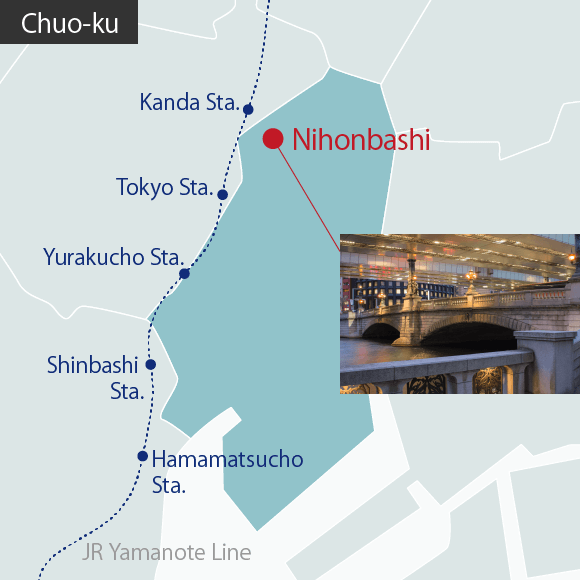
Nihonbashi area is located within walking distance of Tokyo Station, and is home to the Tokyo Stock Exchange, the Bank of Japan Head Office, Nihonbashi Mitsukoshi, and Nihonbashi TakashimayaS.C. It has long flourished as an economic and cultural center of Japan and is the birthplace of the Mitsui Group. Mitsui Fudosan's redevelopment projects are creating a new town while preserving its traditions.
Hide Details
- Ginza
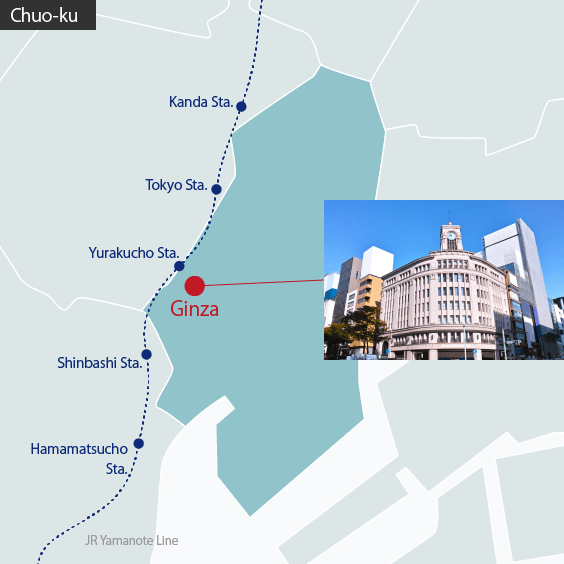
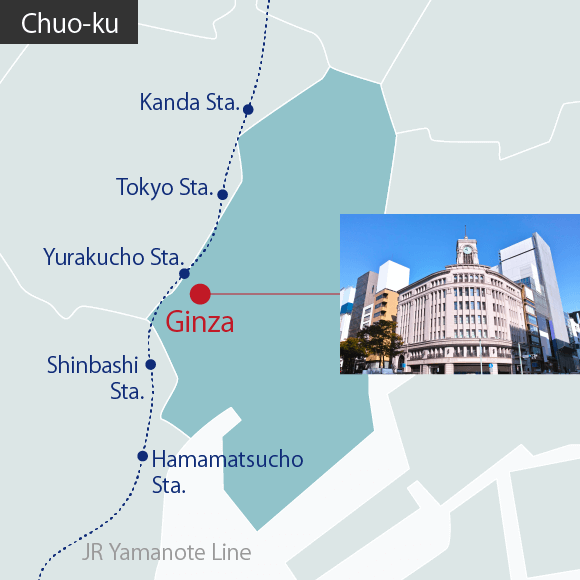
Ginza area has flourished as a place of fashion since ancient times. Ginza Wako and other historic buildings, as well as Kabuki-za Theater, which carries on Japanese culture, are located in this area. In addition, commercial facilities such as GINZA SIX and Ginza Mitsukoshi, world-famous luxury brand stores, and long-established restaurants line the streets. It is an area full of attractions that gathers both domestic and international tourists.
Hide Details
- Tsukishima
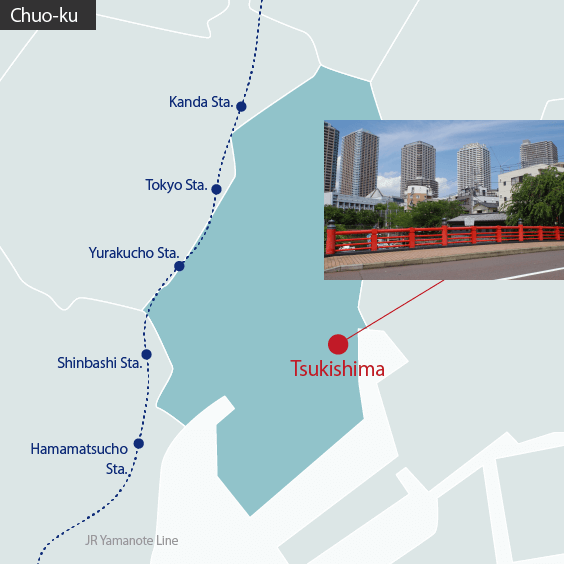
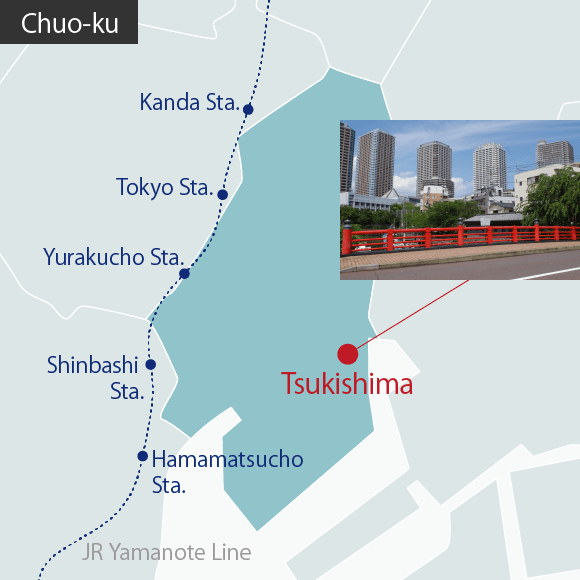
Tsukishima area where downtown atmosphere and modern townscape coexist. Tsukuda area is a pioneer of large-scale waterfront development, and high-rise residentials line Tsukishima Station. In addition, there is a shopping street around the station where the old-fashioned townscape remains, and you can feel the downtown atmosphere. Tsukishima Nishinaka-dori Shopping Street is known as Monja Street and is popular.
Hide Details
- Kachidoki・Harumi

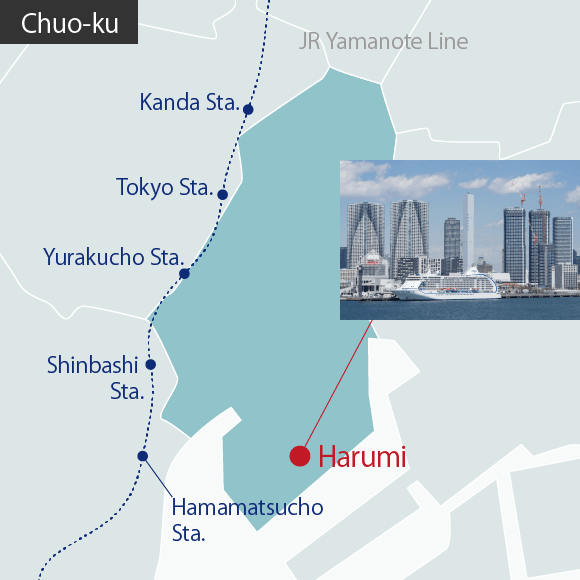
Kachidoki is an area lined with waterfront high-rise residentials. It has an extensive transportation network such as trains, buses, and BRT, and is attractive for its easy access to Tokyo Station, Hibiya, and Ginza area. Harumi Flag, which was built on the site of the Olympic Village for the Tokyo 2020 Olympic and Paralympic Games, is a popular condominium with commercial facilities such as Lala Terrace HARUMI FLAG and educational facilities on the site.
Hide Details


